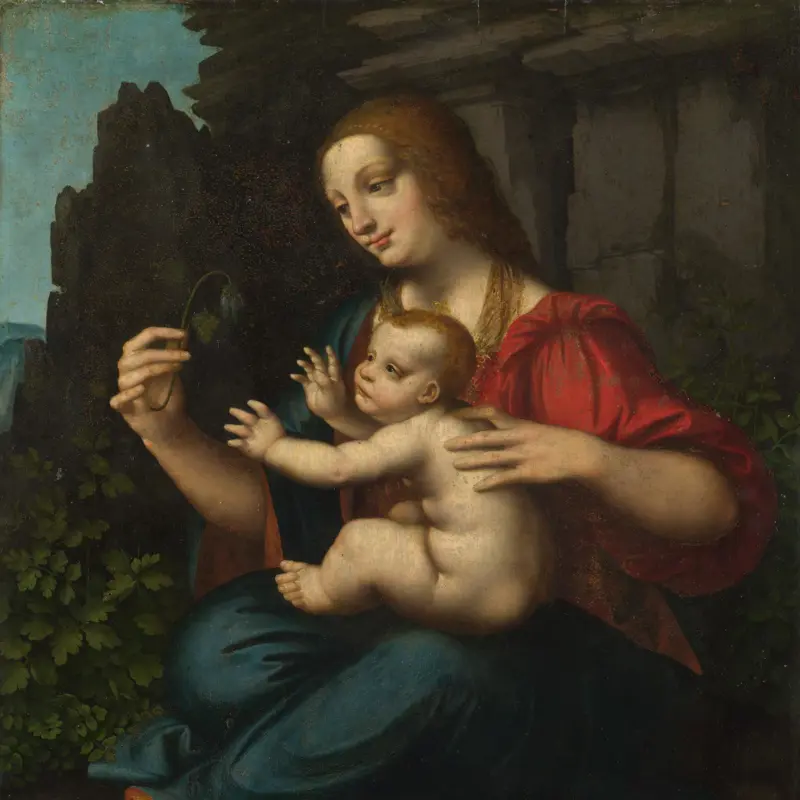Marco d'Oggiono, 'Portrait of a Man aged 20 ('The Archinto Portrait')', 1494
About the work
Overview
A young man gazes past us and into the distance, his hand resting on a marble shelf. We don‘t know who he is, but he holds a scroll bearing his age (20), the date (1494) and a monogram, apparently ’AMPRF‘. This is probably an early portrait by the Milanese painter Marco d’Oggiono, a pupil of Leonardo da Vinci, and there are many similarities between this painting and Leonardo’s La Belle Ferronière (Louvre, Paris).
Like Leonardo, d'Oggiono seems to have been experimenting with novel painting techniques. Very unusually for panel painting there is no gesso ground (a common preparatory layer), only a thick layer of lead white pigment in oil. The distinctive ashen hue of the flesh is partly the result of large amounts of charcoal black in the shadows, but it has been exacerbated by the fading of the red lake pigment that would have given a warmer tone.
Key facts
Details
- Full title
- Portrait of a Man aged 20 ('The Archinto Portrait')
- Artist
- Marco d'Oggiono
- Artist dates
- documented from 1487; died 1524
- Date made
- 1494
- Medium and support
- oil on wood
- Dimensions
- 53.3 × 38.1 cm
- Inscription summary
- Dated and inscribed
- Acquisition credit
- Bought, 1898
- Inventory number
- NG1665
- Location
- Not on display
- Collection
- Main Collection
- Previous owners
Provenance
Additional information
Text extracted from the ‘Provenance’ section of the catalogue entry in Martin Davies, ‘National Gallery Catalogues: The Earlier Italian Schools’, London 1986; for further information, see the full catalogue entry.
Exhibition history
-
2011Leonardo da Vinci: Painter at the Court of MilanThe National Gallery (London)9 November 2011 - 5 February 2012
-
2019Léonard de VinciMusée du Louvre24 October 2019 - 24 February 2020
Bibliography
-
1951Davies, Martin, National Gallery Catalogues: The Earlier Italian Schools, London 1951
-
1986Davies, Martin, National Gallery Catalogues: The Earlier Italian Schools, revised edn, London 1986
-
2001
C. Baker and T. Henry, The National Gallery: Complete Illustrated Catalogue, London 2001
About this record
If you know more about this work or have spotted an error, please contact us. Please note that exhibition histories are listed from 2009 onwards. Bibliographies may not be complete; more comprehensive information is available in the National Gallery Library.

